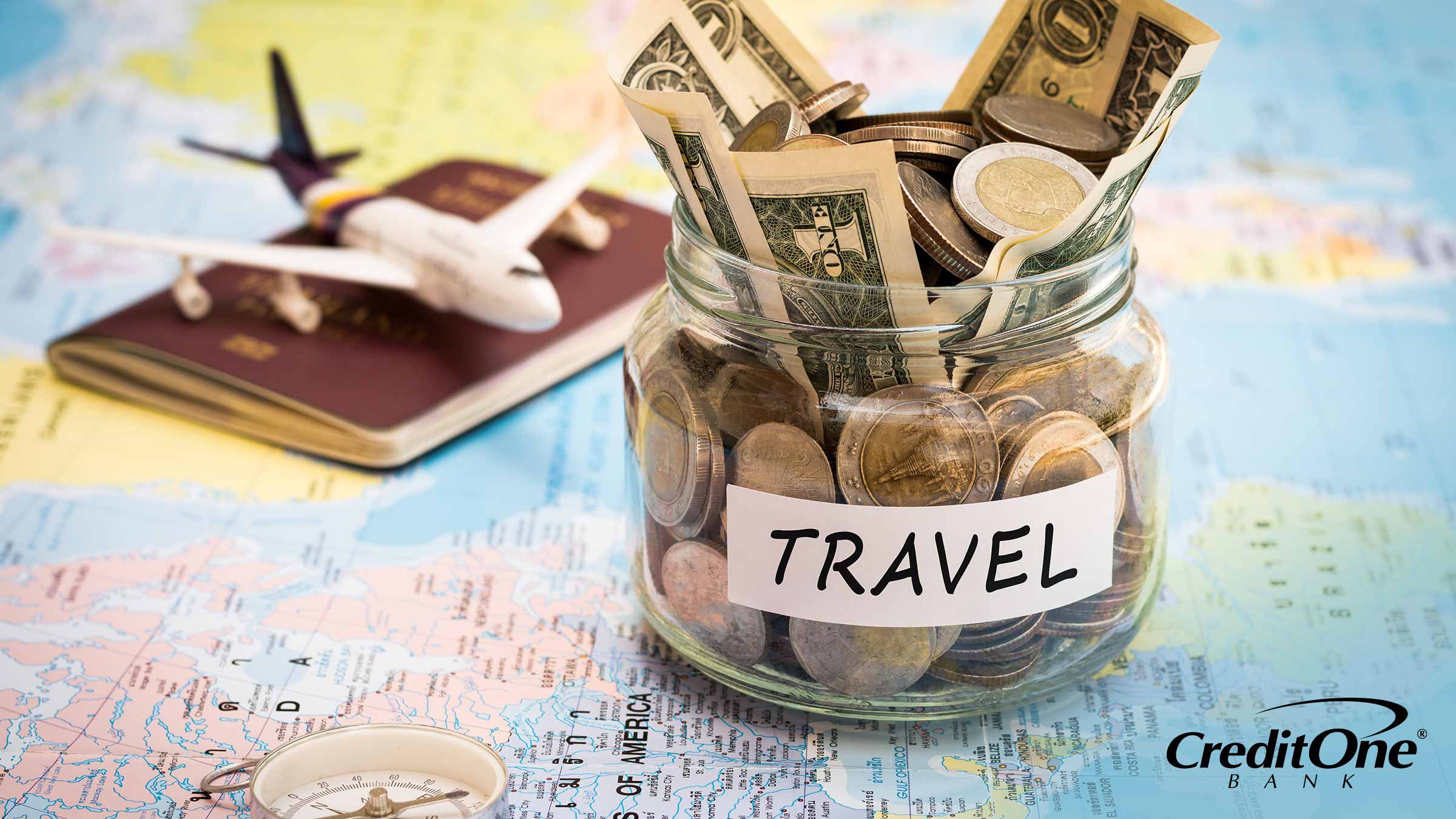How To Save for Annual Travel
April 20, 2023
Planning and paying for an annual vacation can easily get pretty expensive. Here’s how to make saving for your yearly trip easier and less stressful.

Everyone loves a vacation to relax, unwind and see the world or visit family. But travel isn’t cheap, and yearly summer trips or returning home for the holidays each winter can turn into a significant annual expense that severely dings your savings.
In fact, cost is the most common factor preventing people from traveling more, according to AARP’s national poll on travel trends for 2023. And inflation is just making money concerns all the more real. But planning ahead and strategically using your credit cards when you travel can help make your annual trip much more affordable.
Set Realistic Travel Goals
You might have a bucket list that includes seeing Big Ben, the Eiffel Tower and the Great Pyramid of Giza. But it’s important to keep your scope of travel realistic and within your means if you don’t want to blow your entire nest egg in one go.
Start by evaluating your travel goals, including how far and how often you can take a trip, and what types of destinations you’d like to experience. Then, if your wish list is currently out of your reach, lower those expectations to a more manageable financial level. After all, you don’t want to plunge yourself into debt that you can’t afford to dig out of, which could negatively impact your credit score, among other repercussions.
There are really two ways to tackle this. You can either save up for a big vacation in a few years, or spend that money taking smaller trips closer to home. If you plan well, you might even be able to do both—every time you take a weekend getaway now, put away a little for your future dream excursion.
Keep in mind that no matter how amazing an overseas location might be, you can experience many of those attractions in other cities as well. As iconic as the Louvre Museum is, there are wonderful art galleries and museums in almost every major city. Caribbean getaways are awesome, but we also have beaches up and down both U.S. coasts that could satisfy your desire to lounge in the sand. Get creative and you can probably figure out reasonable substitutes for almost any vacation activity.
Budget Ahead of Time
Planning in advance is the best way to stick to a travel budget and keep your vacation realistically affordable. Not only do you get some sweet deals by booking ahead, but you also get a better idea of how much you’ll need to spend for the entire trip. Besides your flights, consider booking your hotels and rental cars as early as possible. Just make sure your reservations come with free cancelations so you can change your mind if something better comes up—or worse, if an emergency forces you to bail on the trip altogether.
Plan for Potential Expenses
Your lodging and transportation costs are important, but they’re only the tip of the iceberg. Make a list of all the potential expenses that could come up during your vacation, so you’re fully prepared with an appropriate amount of money to spend on necessities and fun stuff.
- Lodging: What you pay up front sometimes doesn’t include amenities, resort fees and other costs, so leave a buffer here.
- Transportation: You’ve already considered your flight and/or rental cars, but you might also need to calculate gas, an airport shuttle, and rideshare or public transit to get around the city.
- Food: Plan for every meal and snack that’s not included with your lodging or paid for by somebody else.
- Entertainment: If you want to take in a show or visit some famous landmarks and attractions, check online first to figure out how much it will cost you, and whether discounts are available.
- Souvenirs: You’ll probably want to buy something to remember your trip, so decide in advance how much you want to spend on keepsakes.
Reduce Unnecessary Expenses
Once you complete your planning, you should already have a good idea of how much money you’ll spend on your trip. If you find expenses are too high in one category, see what you can whittle down. And then resist the urge to make impulse purchases that can derail your budget.
But don’t forget to also keep your shopping under control before your trip. The less you can spend on unnecessary things, the more you’ll have to put toward your vacation. So maybe buy only one new bathing suit instead of three, and forgo dining out in the month or two before you leave. Don’t buy new luggage if your old suitcase will work, and avoid making major purchases.
Create a Dedicated Travel Fund
Every financial expert will tell you to have an emergency fund covering three to six months’ worth of expenses. And if you’ve ever built one, you know it doesn’t happen overnight. Saving a little bit at a time, and being consistent, is key. But emergency funds are for emergencies, not vacations, so you should also have a dedicated travel fund. While the money is earmarked differently, the process is essentially the same.
The great thing about setting up a travel fund is that it’s relatively painless while you’re contributing to it. Designate an amount from each paycheck that you won’t really miss, but that’s substantial enough to make the fund grow before you need it. The longer you have before you travel, the easier this will be.
For example, if your trip is in six months and will cost $3,000, then you need to put aside $500 per month. If that doesn’t seem doable, look at moving the trip out another few months, or cutting some expenses so you have less to save. You can also apply your tax refund or bonus from work to give your stash a nice boost.
The key is to keep it totally separate from your regular finances. Some people like to use the tried-and-true money jar method, while others prefer to keep it digital and just set up a dedicated savings account. Either way, it will feel great when you can pay for your whole trip with what you’ve saved in your travel fund and don’t have to worry about stretching yourself too thin.
Earn Extra Income
If you want to grow your travel fund even faster, consider taking on seasonal work, a part-time job, or setting up a side hustle. Yes, this will likely eat up some of your evenings and weekends, at least for a while. But it’s totally worth it when you’re able to chill out on that vacation.
Here are some options to consider:
- Get a part-time job at a café, fast food restaurant, or mall
- Find seasonal overflow work during Christmas or summer
- Become a rideshare or delivery driver
- Sell your crafts or artwork online or in craft shows
- Offer your creative services, like writing or photography
- Do yardwork or dog walking for neighbors
- Sign up for a gig-worker or task-outsourcing platform to grab odd jobs
Whatever you choose, send that income directly to your travel fund so you’re not tempted to spend it on other things.
Use Travel Credit Cards
It’s never recommended to max out your credit cards or use them to purchase things you can’t afford. However, proper use of travel credit cards can enhance your vacation and make the most of your budget while helping you choose optimal hotel and travel arrangements.
Most travel credit cards, such as the Credit One Bank Wander® Card, come with rewards programs, which you can leverage to supplement your travel expenses. A good approach is to maximize your return on points or cash back by using the card in categories that earn the most rewards, and then redeem them for more travel perks. If you pay off your balance each month, you won’t find yourself spending more in interest than you earn back in rewards.



